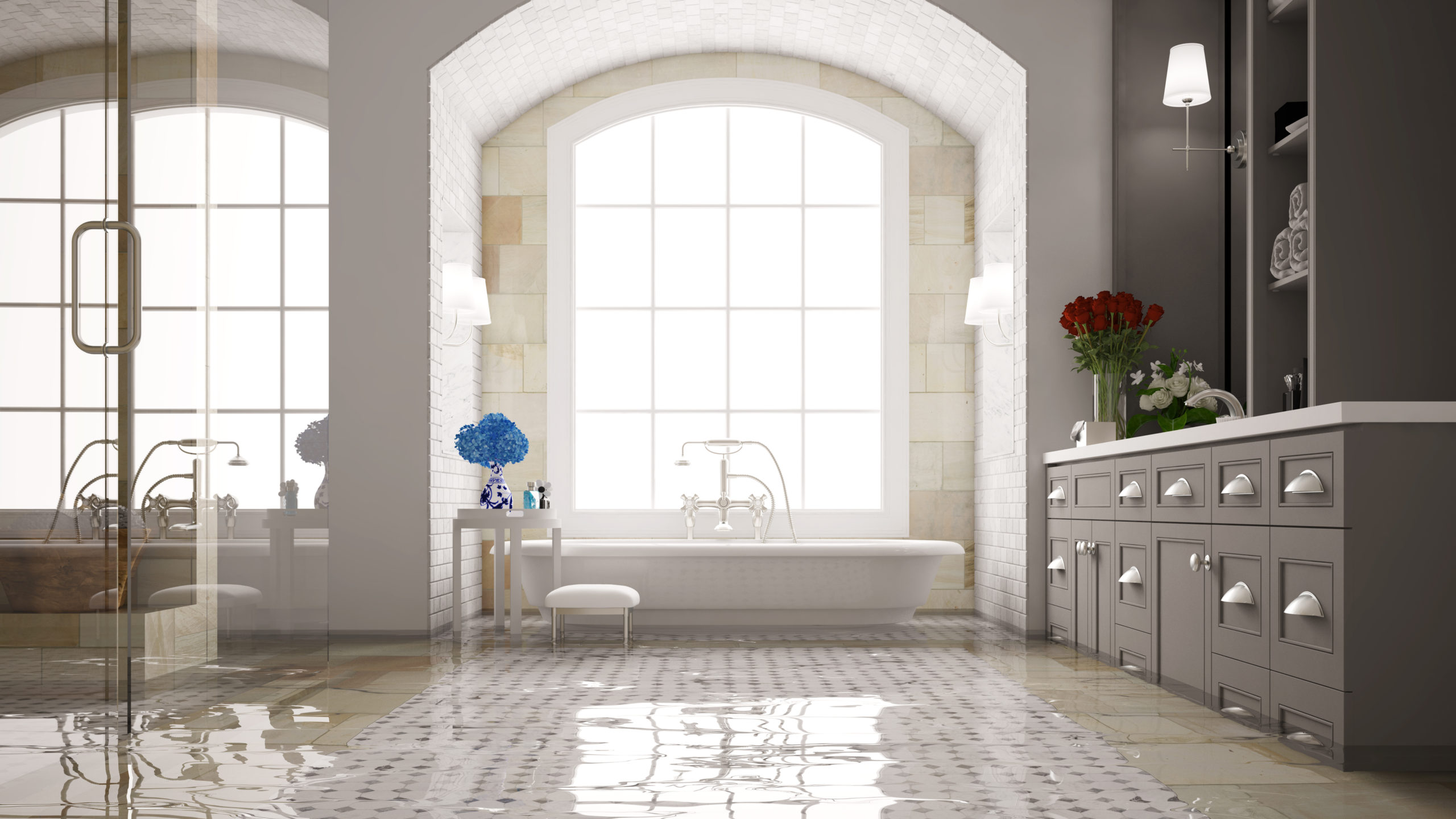
10 Sep. 21
Water Damage Restoration After Your Bathroom Floods
A flooded bathroom is a catastrophe and typically means two things: water damage and a costly repair. The moisture from the shower or the flooded water in your bathroom can inspire mold growth. Aside from the costs associated with removing the mold, a flooded second floor bathroom can cost around $108,000 to fix.
Water is an important part of your bathroom for its fixtures to function, however, these fixtures, like any other fixtures in your home, can wear out over time and get damaged. This makes your bathroom susceptible to water damage.
What to do after bathroom water damage
The moment your bathroom is flooded, there are three things that you need to do to prevent further damage.
- Shut off the water source
Sometimes it is hard to determine the source of the problem especially when all you see is water everywhere. While you figure out the source of the flood, it is best to shut the water in the house off. This way, you can prevent water from spreading further. However, if the cause of the flooding is sewage backup, it is best to avoid making contact with the water and evacuate the area.
- Turn off the electricity
The next thing that you need to do is to turn off the power to your bathroom. Electricity and water is never a good combination. You can shut off the electricity in a particular room or, if the water has spread to the other areas of the house, it is probably best to turn off the power in the entire house.
- Call the experts
Time is very important when it comes to water damage restoration. The longer you push off dealing with the problem, the more damage it can cause to your property. Calling the experts is the best way to deal with water damage caused by bathroom flooding. Professionals can assess the damage and help you with your insurance claims.
How to prevent water damage in your bathroom?
Waking up to a flooded bathroom is the last thing you want. To help you prevent this problem from happening, here are tips to keep in mind.
- Avoid drain and toilet blockage
Clogged drainage and toilet blockage are two main culprits of bathroom flooding. Soap scum, hairs, and dirt can accumulate in the drain and clog it. Pay attention to what’s going down the drain to prevent clogging. You can also add drain shields to filter what’s passing through it. Another bathroom fixture that can experience clogging is your toilet. It is important to use toilet paper conservatively and not to flush any personal hygiene products down the toilet.
- Regularly inspect your shower and bathtub
Grout and caulk are used to seal your shower and bathtubs to prevent water leakage. Over time, they can get cracked or chipped resulting in potential leakage. If this is left unrepaired, it can lead to flooding and water damage. Make sure to inspect your grout and caulk regularly and reapply caulk once you notice damage in order to prevent leakage.
- Maintain your bathroom plumbing system
Your plumbing system is not resistant to corrosion and rust which can lead to water leakage. If you notice any musty smell, water stains, or warping on your bathroom floor, contact a plumbing specialist immediately as it could mean leakage from your pipes.
